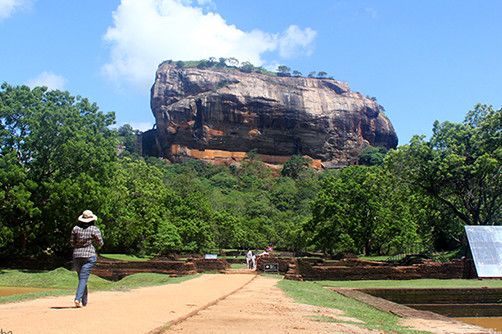More Details :https://en.m.wikipedia.org/wiki/Sigiriya
According to inscriptions found in the caves which honeycomb the base of the rock fortress, Sigiriya served as a place of religious retreat as far back as the third century BC, when Buddhist monks established refuge in the locale. It wasn’t until the fifth century AD, however, that Sigiriya rose briefly to supremacy in Sri Lanka, following the power struggle which succeeded the reign of Dhatusena (455-473) of Anuradhapura. King Dhatusena had two sons, Mogallana, by one of the most desired and finest of his queens, and Kassapa, by a less significant consort. Upon hearing that Mogallana had been declared heir to the throne, Kassapa rebelled, driving Mogallana into exile in India and imprisoning his father, King Dhatusena. The legend of Dhatusena’s subsequent demise offers an enlightening illustration of the importance given to water in early Sinhalese civilization.
Threatened with death if he refused to reveal the whereabouts of the state treasure, Dhatusena agreed to show his errant son its location if he was permitted to bathe one final time in the great Kalawewa Tank, of which the construction he had overseen. Standing within the tank, Dhatusena poured its water through his hands and told Kassapa that this alone was his treasure. Kassapa, none too impressed, had his father walled up in a chamber and left him to die. Mogallana, meanwhile, vowed to return from India and reclaim his inheritance. Kassapa, making preparations for the expected invasion, constructed a new dwelling on top of the 200-metre-high Sigiriya rock – a combination of pleasure palace and indestructible fortress, which Kassapa intended would emulate the legendary abode of Kubera, the god of wealth, while a new city was established around its base. According to folklore, the entire fortress was built in just seven years, from 477 to 485 AD.
SIGIRIYA 169 KM (105 Miles) From Colombo
Sigiriya also known as the Lion's Rock is a rock fortress and a palace located in the Matale district of Sri Lanka. This ruin is surrounded by gardens, ponds and other structures. Sigiriya was built by King Kassapa and it is included as a World Heritage site. Sigiriya is the best preserved city centre in Asia.


No comments:
Post a Comment